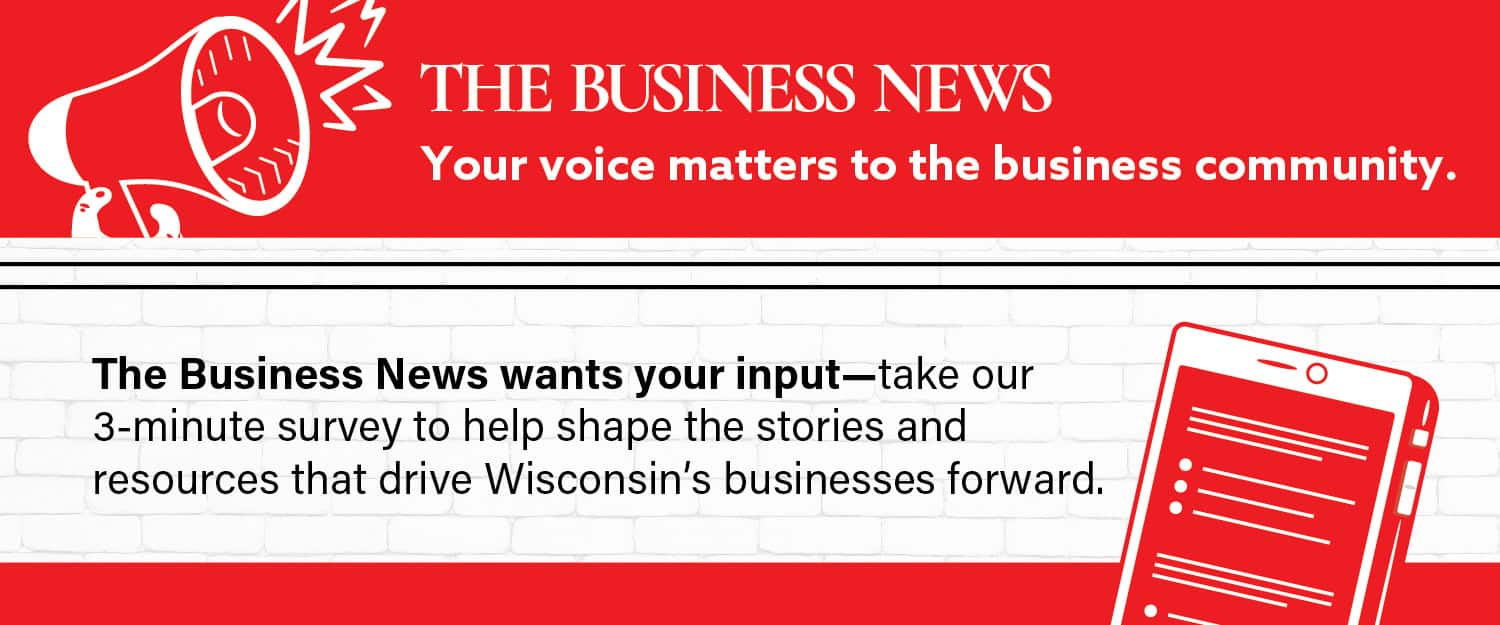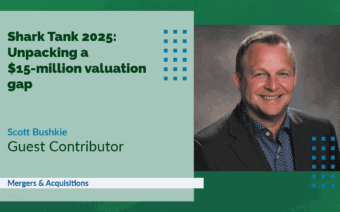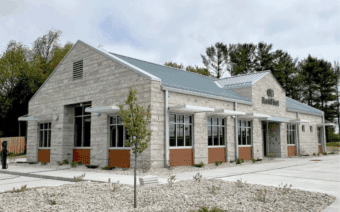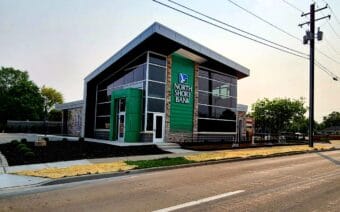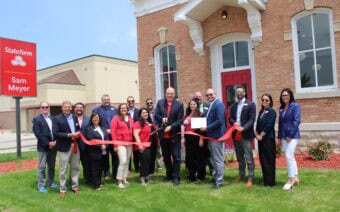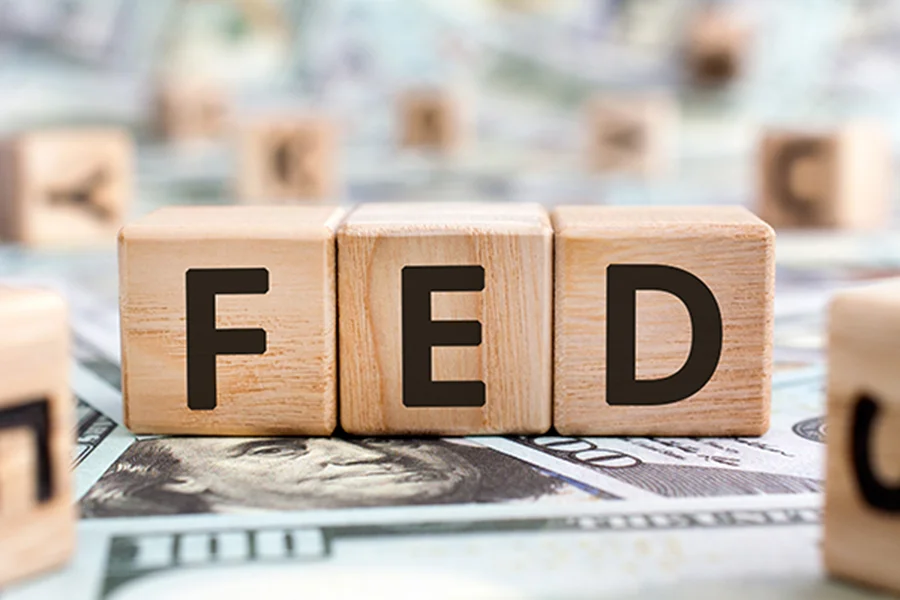
February 24, 2023
NORTHEAST WISCONSIN – It’s no secret interest rates have seen significant increases in the last year – which experts say is being fueled by a steep rise in inflation, partially brought on by an increase in consumer demand.
The Federal Reserve Board of Governors raised the Fed funds rate – which is the interest rate banks charge each other to borrow or lend excess reserves overnight – seven times in 2022, and once already in 2023 – with more increases expected throughout the year.
“Interest rates rose considerably across types and time horizons over the past year as inflation remained problematic,” Terri Trantow, private wealth managing director with U.S. Bank, said. “The Fed tightened policy in an attempt to cool inflation.”
With a quarter percentage point increase already in mid-January of this year, all eyes are now on the Fed as the date of its next meeting to discuss another likely increase is fast approaching – set for March 21-22.
Michael Hochholzer, chief investment officer and EVP with Associated Bank Private Wealth, said what sets what’s happening now apart from other interest rates increases throughout history, is the level and speed of them.
“A year ago, the Fed funds rate was somewhere close to zero,” he said. “Today, we’re sitting here with the target Fed funds rate of 4.75%. That is the largest increase in 40 years and the fastest increase on record. That is clearly a big change on the short-term end of the yield curve.”

Mike Hochholzer
Hochholzer said three-month rates largely followed suit – around 0.38% in mid-February 2022 to around 4.77% in mid-February 2023.
Hochholzer said longer-term rates peaked in October 2022 “as inflation fears and the concerns about how far the Fed was going to have to go sort of peaked, as did the rates.”
“Since then, we’ve been bouncing around in a half a percent sort of range,” he said. “I think we peaked out around four and a quarter, somewhere like that. And we are around 3.75 today, and it’s been stuck in that range since October.”
With the state of inflation today and statements made by Federal Reserve Chairman Jerome Powell, Hochholzer said the Fed is likely to continue to increase rates until things slow down.
“The Fed has clearly signaled the next increase will be a quarter of a point,” he said. “I don’t think there’s a number we can get or even a set of numbers we can get that’s going to change that.”
When inflation is too high, the Fed typically raises rates to slow the economy and bring inflation down – which Hochholzer said has been the rationale for the year-plus worth of increases.
He said though we haven’t seen big changes in inflation itself, that doesn’t mean the increase in rates isn’t doing what the Fed intends for them to do.
“Changes in monetary policy (which refers to the actions undertaken by a central bank, such as the Federal Reserve) typically tend to act with a nine- to 18-month lag,” he said. “So, you’re just into the period where you would expect those impacts to start taking place. And we are beginning to see them – there are prices among a variety of things starting to fall.”
Hochholzer said one could “certainly question” whether those declining prices are the result of the interest rate increases or more of the result of the supply chain issues getting worked out – “that were a key part of kicking this whole inflation cycle off.”
“Supply chain issues have continued to ease across most of the system,” he said. “It seems like it’s a little bit of a game of Whack a Mole – as one thing gets better something else gets worse.”

Paul Northway
Although there have been ebbs and flows – Hochholzer said the trend is “decidedly toward improvement there.”
“New car availability would be the poster child for that,” he said. “There are new cars on the lot, so you can get one if you need one at this point. Whereas a year ago, and even six months ago, that was extremely hard, due to chip shortages and those sorts of things.”
How does the Fed make its decision?
Rick Reid, an economics instructor at Fox Valley Technical College, said it is the role of the Federal Reserve to assess where the economy is, where it’s headed and what action, if any, is needed to balance stable prices against full employment.
“Those are the two primary mandates for the Federal Reserve from Congress,” he said.
Reid said the Federal Open Market Committee (FOMC) – which consists of the seven members of the Board of Governors of the Federal Reserve System, the president of the Federal Reserve Bank of New York and four of the remaining eleven Reserve Bank presidents, who serve one-year terms on a rotating basis – is the decision-making body of the Federal Reserve.
“When we hear about interest rates going up, what that is shorthand for is the FOMC has taken a look at all the data from across the country and weighed the status of price stability against full employment and modest economic growth and made a determination of what they want to do,” he said. “In the last year, it’s been to increase interest rates as a way of tamping down inflation that seems to have gotten aggressive.”
Paul Northway, the president and CEO of American National Bank Fox Cities, said it’s an interesting situation because defeating inflation means the possibility of starting a recession.
“We should be rooting for the end of inflation with a ‘soft landing recession,’” he said.
Northway said in reality, recessions don’t last long.
“I believe over the past 30 years, we have been in a recession less than 10% of the time,” he said. “Consumers need relief from inflation so the cost of going to the grocery store, pumping gas and even recreation becomes more affordable.”
If you follow the definition of two consecutive quarters of negative gross domestic product – which is a monetary measure of the market value of all the final goods and services produced and sold in a specific time period – Northway said the U.S. should have entered into a recession in the summer of 2022.
However, he said many other factors are taken into account when declaring a recession.
“Many economists have a hard time believing the economy is in a recession given the strong labor market and corporate earnings growth,” he said.
Reid said the FOMC has, in the last 25 years or so, made a consensus effort to “telegraph their overall direction more than they had in the past.”
“To be more clear about their decision-making process – because what they are trying to avoid is causing people to expect something other than what is likely to happen,” he said. “Because that can have unintended consequences.”
Reid said that “part of the beauty in the design of the Federal Reserve” is it has representation from across the country.

The Federal Open Market Committee (FOMC) – which consists of the seven members of the Board of Governors of the Federal Reserve System, the president of the Federal Reserve Bank of New York and four of the remaining eleven Reserve Bank presidents, who serve one-year terms on a rotating basis – is the decision-making body of the Federal Reserve. Stock Image
“While they set policy and have a governing committee in Washington, they have good representation from across the country,” he said. “When they make decisions, they’re including what’s going on regionally. They look at what’s going on in Wisconsin, as they do in California, as they do with North Dakota.”
How did we get here?
Coming out of the pandemic, Hochholzer said the return happened “substantially faster” than most people expected and “certainly faster” than companies were prepared for – which in turn created a domino effect.
“You had substantial stimulus from the government flowing into the system at that point, bolstering consumer balance sheets,” he said. “People couldn’t spend money during the COVID-19 pandemic – they couldn’t go out and do things they usually spent money on. And the government was providing stimulus checks, so consumer savings skyrocketed.”
Hochholzer said that in turn drove demand – first for goods.
“While the pandemic was still a substantial issue, people were still concerned about going out, going to restaurants, being among people, going to Super Bowl parties, those sorts of things,” he said. “The demand for goods was huge, and that’s where we saw the supply constraints come in. That’s where we saw the inflation drive on the goods side of the equation.”
As concerns about the pandemic abated, with vaccines and treatments coming online, Hocholzer said people were more willing to be out and about, which quickly shifted the demand from the goods side to the services side.
“You’re now seeing restaurant demand again, and travel demand is huge – those sorts of things are coming back in a big way, and that’s in a lot of places where we’re seeing inflation being driven at this point,” he said.
In terms of supply growth, Hochholzer said “we fixed that problem for the most part,” but the services side is a “lot harder to fix” given the “very tight” employment picture.
“The Fed is clearly trying to ease off that demand without pushing it too far, and throwing us into a recession,” he said.
What is being discussed?
Hochholzer said the Fed has made it as clear as they can — they are in this to end the inflation issue as we see it today.
“The last increase was a quarter of a point,” he said. “The Fed has clearly signaled the next increase will be a quarter of a point. The market has largely baked that in at this point. So, with as much confidence as one can have about those sorts of things, I think we will get a quarter-point rate increase in March.”

Rick Reid
Northway said the Fed is focused on inflation, which rose 6.4% in January – more than the 6.2% expected.
“The labor market remains red-hot,” he said. “Employers added 4.8 million jobs in 2022, and businesses created another 517,000 new jobs in January. Unemployment has hit a historic low.”
Hochholzer said as long as the labor market remains as tight as it is, there’s also going to be wage pressure.
“The wage pressure is going to continue to feed those inflation fears until that can ease off,” he said.
Agreeing, Trantow said the Fed remains data-dependent in its quest to reduce inflation.
“Asset prices from stocks and bonds to home prices fell in the last year, and goods prices have begun decelerating and, in some cases, falling very recently,” she said. “Service prices, however, remain high and rising, which can relate to wage growth and thus the labor market remains a key for the Fed beyond the headline consumer and producer inflation data. Consumers continue spending at a robust pace measured by recent retail sales data.”
Trantow said consumer data is one of the areas U.S. Bank remains focused on.
“Federal stimulus, cheap financing, rising stock markets and rising home prices boosted consumer sentiment and spending leading up to last year,” she said. “Now, those items shifted from tailwinds to headwinds yet consumer spending remains robust, potentially due in part to the strong labor market and rising wages.”
Trantow said if consumers prove resilient, the economy could avoid recession.
“To arrive at that outcome, we want to see inflation fall quickly and the Fed cease rate hikes,” she said.
Hochholzer said his instincts tell him the housing market isn’t going to be a critical factor in the Fed’s decision – which he noted has been relatively slow for some time.
“With mortgage rates having gone from 3-4% to more than 6% in the last 12 months, housing demand and housing affordability have eased off here,” he said. “It’s probably more an outcome of this process than it is a big driver of the process.”
Difference between now and 2008
Hochholzer said there were a number of overhanging issues.
“The banks were over-leveraged,” he said. “Some homeowners were over-leveraged. And the outlook was that everything was great and this was going to go on forever.”
As we sit here today, Hochholzer said you could make an argument that it’s almost the complete opposite of that.
“The banks are in great financial health, due in large part to the rules and the concerns put in place from the last time around,” he said. “Consumers are in solid financial health, again, going back to the employment picture, the excess savings from the pandemic and the stimulus.”
Hochholzer acknowledged consumers’ excess savings accounts are declining.
//s3.amazonaws.com/appforest_uf/f1677263135362x377990093881133800/richtext_content.webp Terri Trantow
“There are some issues there, but over-leveraged is not a term anyone would use to describe the consumer overall, at this point,” he said.
Hochholzer said expectations of where things are and where they will go are also different.
“It’s hard to find anyone that says, ‘No, everything is great. The growth is going to go on forever,’” he said. “There are concerns in virtually every corner about an economic slowdown. The discussion tends to be around – how bad is it? Where does it hit hardest? – those sorts of questions, rather than if there’s going to be one.”
Those expectations, Hochholzer said, are important because the change in 2008-09 “was a shock to the system.”
“If everybody’s expecting the economic slowdown, it’s much less of a shock, and likely has a much quicker and less significant impact on the U.S. economy, as well as on individuals and in their behaviors,” he said.
What does change look like?
Hochholzer said inflation is what is driving rate increases, and inflation is what’s going to give the Fed the opportunity to stop raising rates and start reducing them at some point.
“The most evident factors in that inflation are the things people are buying every day,” he said. “Many of the things that drove the big inflation numbers we saw late last year – we are beginning to see some of those prices come down, particularly meat prices, more recently, egg prices. Mortgage rates were north of 7% – we are now around 6-6.5%. So, those things have started to come down – which are the early signs of the ability of the Fed to ease off on this mission to tamp down inflation.”
Reid said one of the signals of when the Fed may start easing up on their interest rate increases has to do with overall output.
“How much are we producing as a nation?” he said. “If that starts to level off or starts to decline, that is probably a warning light for them to slow down their interest rate increases or take a fresh look at it.”
The same is true, Reid said, with unemployment rates.
“If we start to see the unemployment rate rise, or as importantly, what we’ve seen recently is wages have been rising – when you start to see that slow down or stop, that is another signal the Fed may stop or may slow down the aggressive interest rate increases from an employment standpoint,” he said.
Trantow said the U.S. Bank economics team anticipates gross domestic product growth of 1.3% in 2023.
“With strong labor market momentum, a weaker job market (isn’t expected) until the second half of the year,” she said. “Risks to the forecast remain skewed to the downside, stemming from an aggressive Fed and translating to a 50% odds of a recession this year.”
Trantow said global sovereign bond yields, including U.S. Treasury yields, continue trending higher for now and central banks continue increasing interest rates, albeit at a slower pace than last year.
“We anticipate we may see better opportunities to extend bond portfolio maturity profiles later this year, and interest rates and bond yields should fall in the long run due in part to moderating inflation and demographic trends,” she said. “For the time being, we see opportunities in high-quality bonds, which offer reasonably compelling yields and important portfolio diversification features.”
Is a recession coming?
Hochholzer said the risk of a recession during the middle part of 2023 and into 2024, “seems extremely high.”
“That’s just driven by history,” he said. “Since the 1950s, we’ve had 13 rate-increase cycles – 10 of those have resulted in recessions. And the three that haven’t been in relatively unique time periods – the Vietnam War was one of them.”
With this cycle’s rate increase being the largest and fastest ever, Hochholzer said to not have that land in a recession at some point down the road, “seems like an unlikely scenario.”
“Perhaps, the big caveat to that is we’ve had unprecedented outcomes for three years now, after the pandemic,” he said. “Maybe this turns out to be something unique and unusual from that perspective as well. I guess I’m not 100% committed to the notion there’s a recession in the future. History and probability say it’s more likely than not at this point.”
 Fifth Ward Brewing Co. raises a glass to growing business
Fifth Ward Brewing Co. raises a glass to growing business Local cheesemaker takes home state fair’s top prize for cheese curds
Local cheesemaker takes home state fair’s top prize for cheese curds

